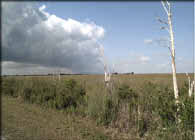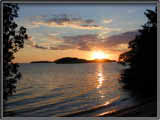| Glossary |
| Photo Gallery |
| About this site |


| Looking for your photo from the USGS Open House? |
 |
|
| Don't forget to visit our Kid's version of the Virtual Tour! |
Welcome to SOFIA's South Florida Virtual Tour.
Grab your camera as we take a tour around beautiful south Florida. We'll head to places like Everglades National Park, Big Cypress National Park, and the Florida Keys. We'll also visit places you might have never heard of, like Corkscrew Swamp, Fern Forest, and "Alligator Alley" - just to name a few. You'll see mangroves, alligators, deer, birds of all kinds, and a few other surprises!
But First a Bit about South Florida
South Florida's climate is subtropical and humid. Average annual rainfall in South Florida is between 40 to 65-inches. More than half of the rainfall occurs in the wet season, which is June through September. Historically, rainfall from the Kissimmee Valley filled Lake Okeechobee during the summer rainy season and excess water spilled out along its southern shore. Some of the waters were absorbed into the soil, converting decaying plant materials into rich, fertile mucky soils; the rest were released to the beginning flows of the
Everglade's "River of Grass". Shallow waters a few inches to a few feet in depth and over 50 miles wide slowly flowed 100 miles south to the Gulf of Mexico and Florida Bay.

Map showing location of tour area. Click on map for larger version.
In 1926 and 1928, hurricane waters destroyed the dikes on Lake Okeechobee’s southern edge causing thousands of deaths. This prompted the state of Florida to ask for help from the U.S. Army Corp of Engineers (USACE). As part of the Central and Southern Florida (C&SF) Project, the USACE constructed about 1,000 miles of canals, levees, gates, dams and pump stations. While the C&SF Project was successful with providing flood control, the natural flow of water to the Everglades was greatly affected.
Historic wet and dry seasons, which provided steady sheets of water, have been replaced with times of drought or powerful discharges. Waters reaching the lower Everglades have passed through agricultural and urban areas and contain increased nutrients, such as nitrogen and phosphorus, and pollutants. While sawgrass historically acted as a filter to the slow moving waters, it cannot filter the increased nutrient loads, which now travel "downstream" through the Everglades and to Florida Bay and the coral reefs.
What you'll need on your trip
- the free IPIX viewer to view the 360 degree images
- good bug spray
Changes in the historic water flow have resulted in habitat destruction and loss of species. Many animals are endangered or threatened and wading bird populations have been greatly reduced. Other environmental effects include soil loss, nutrient enrichment, pesticide contamination, mercury buildup, fragmentation of landscape, loss of wetlands and wetland functions, invasion by exotic species such as the cattail and melaleuca, increased algal blooming in coastal waters, seagrass die off and declines in fishing resources.

A storm approaches across the sawgrass prairie.
Restoring South Florida
To determine what was needed to restore the Everglades and Florida Bay ecosystems, Congress authorized a Comprehensive Review Study (Restudy) of the C&SF Project in 1992. A 20-year Central and Southern Florida Project Comprehensive Plan was presented to Congress in July 1999. With estimated costs of $7.8 billion, the Plan is the most expensive ecosystem restoration plan in U.S. history. Today, the USGS (through the USGS South Florida Place-Based Studies Program) along with more than 30 other Federal, State, Local and Tribal government
agencies are providing the scientific research needed to restore the South Florida environment.

Sunset over Florida Bay.
Come along with us and tour the drained and developed areas in and around Lake Okeechobee, the Everglades Agricultural Area, the Water Conservation Areas and Alligator Alley. Also, come and see the more natural areas of Jonathan Dickinson State Park, Blowing Rocks Preserve, Fern Forest, Big Cypress National Preserve, Corkscrew Swamp Sanctuary, Fakahatchee Strand State Preserve, Biscayne National Park, Everglades National Park, Florida Bay & the Keys, and the Ten Thousand Islands. As we guide you through South Florida, we will tell you about its natural systems and about some of South Florida’s water management history and how it has affected the present-day South Florida ecosystem.
| Disclaimer | Top |
